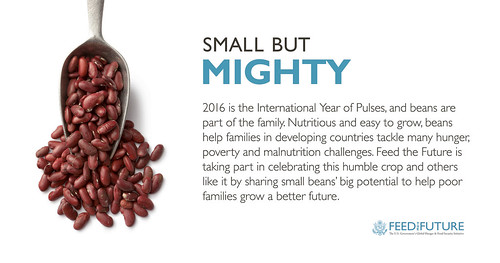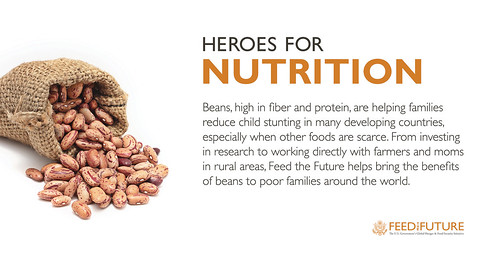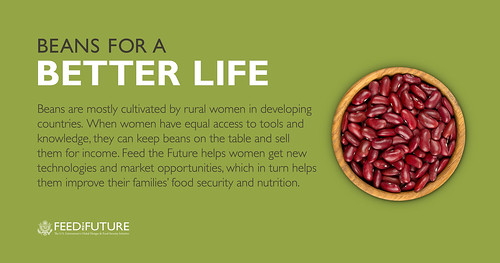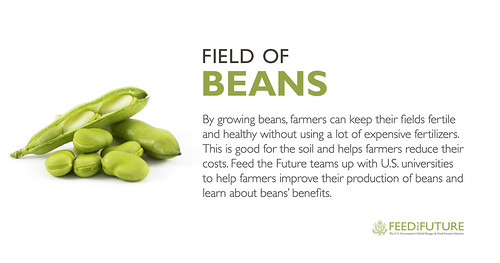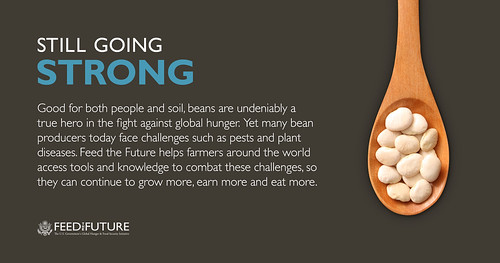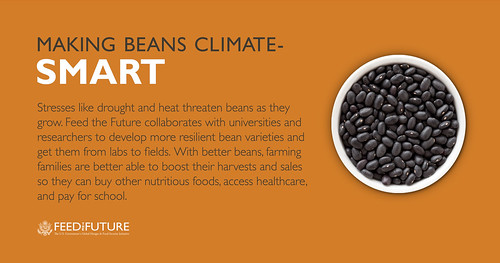6 Things Beans Bring to the Table
This fall, we’re celebrating beans as the star ingredient in our annual recipe contest! Why? Around the world, this humble crop is helping families fight poverty and boost nutrition.
Beans might be small, but they have big potential to help poor families grow a better future.
Feed the Future helps farmers in developing countries turn this potential into profit through growing more beans, both to eat at home and to sell for income. With more income, these farming families can buy other nutritious foods, access health care, pay for school, and save and invest in their future. Feed the Future also supports research to make beans more climate-smart and pest-resistant, so farmers have more options for meeting these challenges and sustaining progress.
Still not sold on the benefits of beans? Here are six more reasons to love them:
1) Beans have staying power! Dried beans can be stored for months without losing their nutritional value. This helps increase food availability between harvests, which contributes to food security around the world.
2) Beans are good for people. They are an easily accessible nutritious food. Humans have cultivated beans for thousands of years, and beans are still a staple food for millions of people around the globe. They serve as a nutritious food source for many rural families, especially in East and Southern Africa and Central America. Common beans, for example, have three to four times more protein per gram than corn does. In fact, beans are a key part of high quality diets, which are critical to help families reduce childhood stunting in many developing countries, especially when other protein-rich foods are scarce.
3) Beans are mostly cultivated by rural women in developing countries. When we empower women who grow them with equal access to tools and knowledge, they can improve their families’ food security and nutrition.
4) Beans are also good for the soil. They help improve soil fertility, which extends the useful life of farmland. Beans don’t need alot of expensive fertilizers to grow, which also helps farmers reduce their costs. It’s a win-win situation all around!
5) Using good agricultural practices, farmers are able to grow enough beans for their own families and for sale. This provides an opportunity for them to help pull themselves out of poverty while feed their families, community and beyond.
6) Beans are also a surprising ally in the fight against climate change. With a smaller carbon footprint than many other vegetables, beans indirectly reduce greenhouse gas emissions. With a broad genetic diversity from which climate-resilient varieties can be selected, researchers can also develop better beans that fight back against stresses like drought and heat.
Recognizing what beans bring to the table in ending hunger and poverty, Feed the Future works closely with partners to ensure rural farmers in developing countries have the tools and knowledge they need to learn the benefits of beans, apply best practices to boost their harvests, and gain access to markets for sales, so we can build a more food-secure future together.
This fall, we invite you to join us to help raise awareness about agriculture’s potential to end poverty, hunger, and poor nutrition by sharing a recipe with us. Check out our 2016 Feed the Future Recipe Contest to learn more.
Want to learn more about beans? Check out the UN’s International Year of Pulses (beans are in the family!) website.
You can read more stories of how Feed the Future works with farmers in our 2016 progress report.

